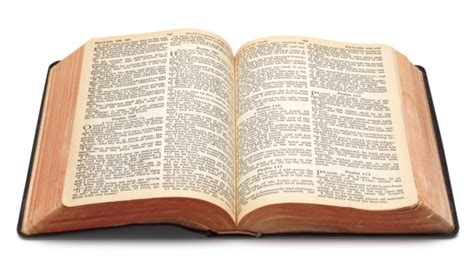- Joined
- Jun 19, 2023
- Messages
- 1,361
- Reaction score
- 2,442
- Points
- 133
- Age
- 47
- Location
- Canada
- Faith
- Reformed (URCNA)
- Country
- Canada
- Marital status
- Married
- Politics
- Kingdom of God
The Seed of the Woman? The Surprising Logic of Redemptive History
WARNING: The following is not something that I have read anywhere, but rather it is something I have deduced from interrelated doctrines of Christian orthodoxy. That is not to say that nobody else has ever made the same connections, but only that I've never seen this set forth anywhere else. I hope it's not truly unique. Any theological, doctrinal, or confessional errors found in this tapestry that I have woven together from those servants of God whose works I have read are entirely my own. I welcome your patient review and critical analysis of the following theological synthesis.
Introduction
In the ruins of Eden, as judgment fell upon the serpent, the woman, and finally the man, a word of hope pierced the darkness. God promised enmity between the serpent and the woman, between his seed and her seed, and foretold the crushing of the serpent's head by that promised seed (Gen. 3:15). This protoevangelium—the first announcement of the gospel—is often recognized as the dawn of the covenant of grace. And yet its covenantal and federal significance runs far deeper than is often appreciated.It is not merely incidental that God spoke of the seed of the woman. In fact, that should be jarring. In ancient Israel, lineage was reckoned through the father. Tribal inheritance, priestly succession, and royal dynasties all flowed through the male line. But here, in the first articulation of salvation, God bypasses the man. He points forward to a redeemer who will come through the woman.
The stain of Adamic headship
When Adam sinned, he did not merely plunge himself into ruin; he implicated all who were represented by his federal headship. Paul teaches that "in Adam all die" (1 Cor. 15:22). Standing as the federal head of the human race, his disobedience rendered all those in him guilty and corrupt by nature (Rom. 5:12–19). Redemption could not come through ordinary generation, as all those born of Adam are necessarily defiled by the same corruption. We are all born into this world as covenant-breakers—polluted, guilty, and unfit and unable to destroy the works of the devil. No son of Adam, bearing his fallen image (cf. 1 Cor. 15:49), could ever rise to destroy the serpent.A profound problem therefore emerges: How can salvation arise from a humanity already condemned? How can a covenant-keeping head emerge from Adamic humanity which gives birth to covenant-breakers?
The answer God gives in Genesis 3:15 is that the promised seed will come through the woman, not through the man. This subtle, sovereign act signals that redemption will not proceed by the natural course of human generation. It will come by divine intervention—a new work of God that interrupts the fallen order.
The virgin birth and the severance from Adam
This stark covenantal reality finds its fulfillment in the virgin birth of Jesus Christ. As recorded in the Matthean gospel, Mary "was found to be pregnant through the Holy Spirit" (Matt. 1:18). Luke likewise testifies that the Holy Spirit would come upon her, and the power of the Most High would overshadow her (Luke 1:35). Christ was conceived apart from a human father, severing the line of federal descent from Adam.In the virgin birth, God sovereignly preserves true humanity—Christ is "born of a woman" (Gal. 4:4)—while breaking the transmission of covenantal guilt and corruption. The new covenant head must be truly man in order to redeem men, but he cannot be born of Adam's corrupted seed. In this way, Christ is born fully human and yet without sin (Heb. 4:15). He bears our human nature but not our sinful nature; he shares our flesh but not our depravity. He is suited to stand as a second Adam, a new federal representative, who can fulfill the demands of righteousness and crush the head of the ancient serpent.
- Christ is fully man, able to redeem men.
- Christ is without sin, able to be the spotless covenant-keeper.
The formation of a new humanity
By being born of a virgin with no earthly father, the promised seed inaugurates a new humanity distinct from the fallen mass of Adam's race. According to covenantal headship, those born in Adam are by nature covenant-breakers (sinners); by contrast, those born-again in Christ are by grace covenant-keepers (righteous). When believers are united to Christ, they are no longer reckoned under Adam's condemned headship but placed under Christ's righteous headship. Just as all those in Adam die, so all those in Christ are made alive (1 Cor. 15:22)—which was foreshadowed by the promise spoken by God of the woman, whom Adam subsequently called Eve, the mother of all the living.In Genesis 3:15 we find the inauguration of the covenant of grace. After the fall, God sovereignly institutes a new covenantal structure, one centered on the promised seed. This covenant is not made in the context of Adam as a private individual, nor in the context of humanity as capable covenant-keepers, but in the context of Christ as the appointed Mediator of all those in him. From the very outset, redemptive history is structured not by human effort or potential but the redemptive plan of God's sovereign purpose. The God who ordains the end also ordains the means, from the virgin conception to the sinless life, atoning death, the victorious resurrection of our only Redeemer. Every element of salvation is rooted in God's gracious reconstitution of humanity under a new covenant head—the seed of the woman.
Conclusion
When we read the protoevangelium, we are not simply hearing the first whisper of hope; we are witnessing the announcement of a new cosmic order. God, in his infinite wisdom, ordained that salvation would come not through the polluted stream of Adam's sons but through a miraculous intervention in the womb of a woman, the seed who would crush the serpent's head, undoing the works of the devil and establishing a new creation in himself. The virgin birth is not an ad hoc isolated miracle but the covenantal logic of redemptive history, marking the point where the old Adamic world gives way to the new creation in Christ.Through the seed of the woman we are brought out of the dominion of darkness and into the kingdom of the beloved Son (Col. 1:13). Through him we are made righteous, holy, and heirs of eternal life—not with a physical birth resulting from human passion or plan, but a birth that comes from God (if you will allow me to repurpose a well-known passage). To God alone be the glory, who has done this, from before the foundation of the world, in Christ Jesus our Lord.

